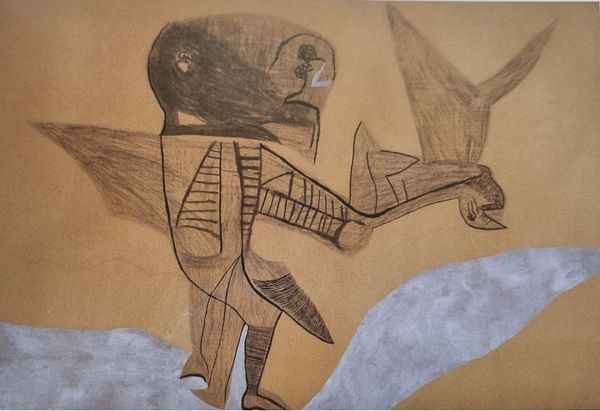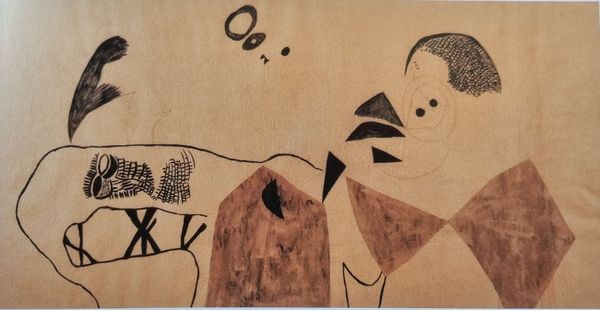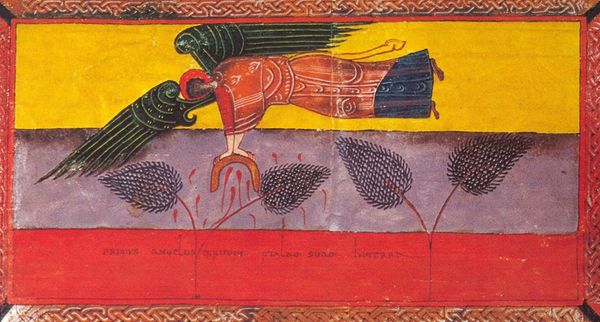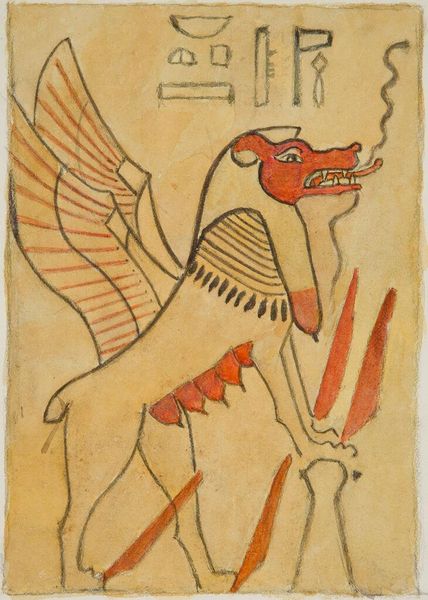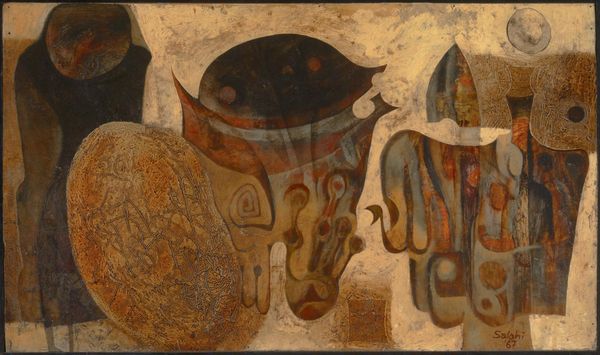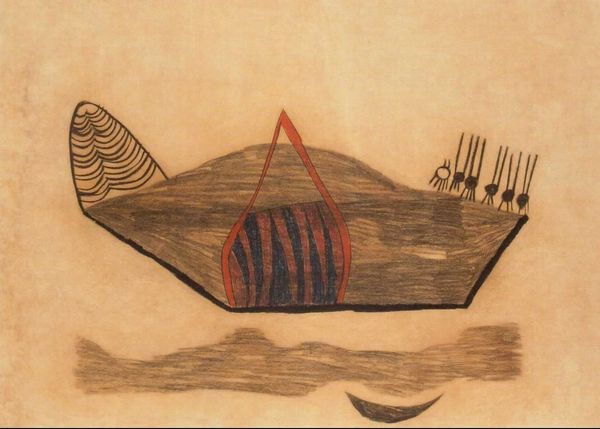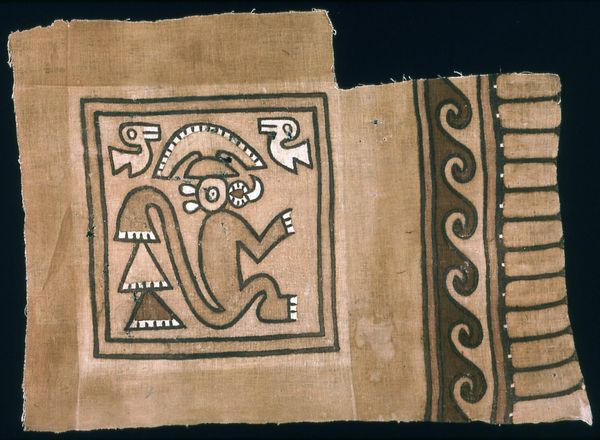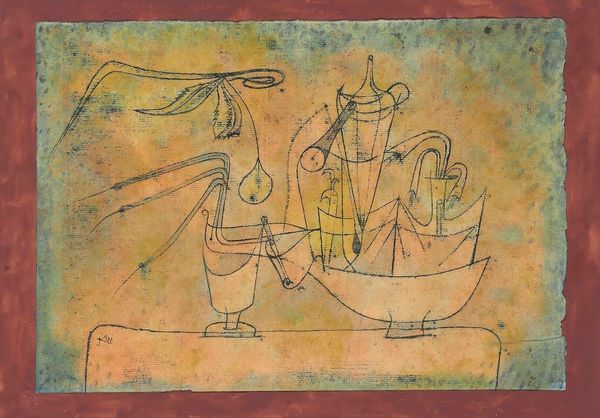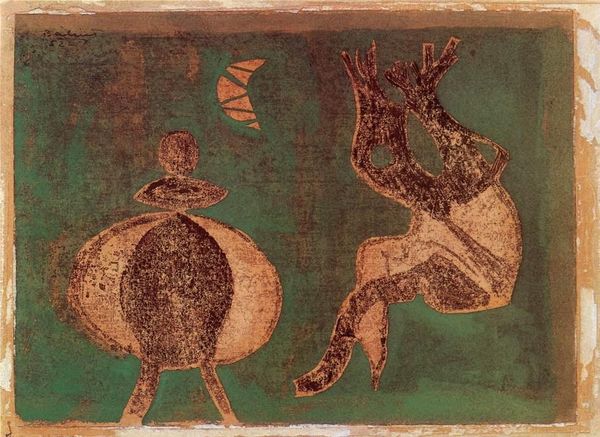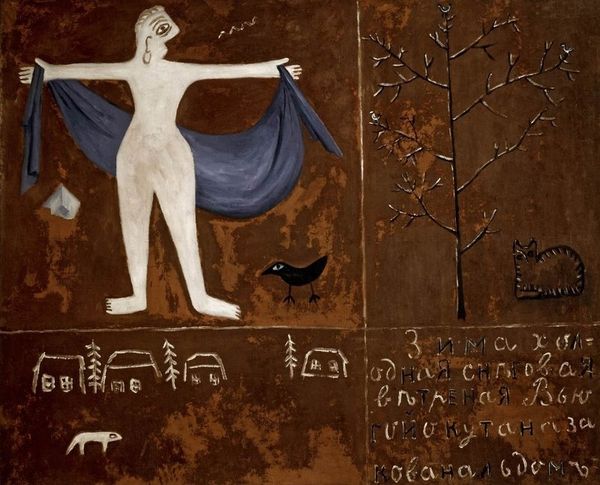
Copyright: Public domain
Curator: This haunting image is entitled *Winged Being on Silver Ground*, a 1938 work on paper by Lajos Vajda. It employs pencil and colored pencil to realize its unsettling forms. Editor: My initial response is that the image evokes feelings of being lost or trapped. The muted tones enhance a palpable sense of disquiet and foreboding. The scale also adds to this feeling, seemingly cramped between sky and... water? Curator: The figure emerges from a pivotal time in Vajda’s life, one shadowed by the rise of fascism and the looming horrors of World War II. Considering his Jewish heritage, this is reflected in much of his output. His art becomes an exploration of displacement, vulnerability, and the erosion of identity during times of immense political turmoil. How do you think this intersects with notions of "home?" Editor: From a purely structural perspective, note the unsettling duality within the image. A dualism exists within a unified frame, like in cubism; two halves that are joined yet divided. Look at the mirrored head shape that repeats a face shape further along the torso or arm of the winged being. Curator: Right. These “doubled” or "masked" faces became one of Vajda’s signature visual devices. He draws on cultural theory and religious imagery to show dual perspectives, an important comment, as we previously stated, given the political environment in Eastern Europe during the interwar years, but also reflecting Vajda’s own conversion to Catholicism in the 1930s. He saw it as an assertion of identity in an age that repressed certain aspects of culture and identity, or forced assimilation upon those whom it could. Editor: If you allow me, I’ll come back to my original note, because there's a certain discordance between the organic forms and the rigid geometry used for the body that intensifies this sense of unease. This visual paradox effectively renders the figure caught between dimensions, much like being caught between religions and ways of being. We may be seeing one man, in two places at the same time. Curator: An insightful perspective on an artwork teeming with anxiety. For me, thinking about the work now, the image resonates as both an external representation of larger conflicts and a reflection of Vajda’s internal struggle with identity during a turbulent period. Editor: Indeed. On the other hand, the interplay between form and color certainly provided a stimulating visual experience.
Comments
No comments
Be the first to comment and join the conversation on the ultimate creative platform.
